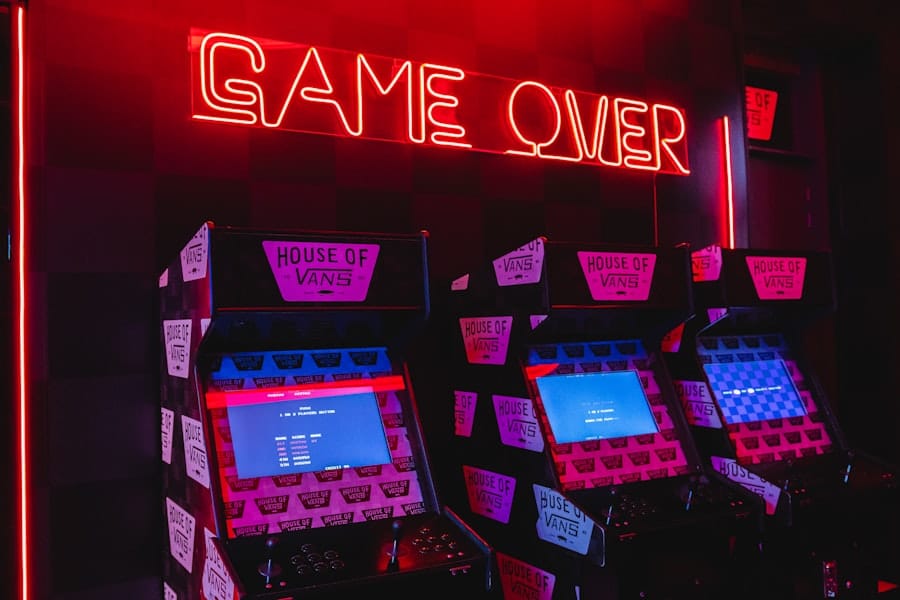In recent years, the educational landscape has undergone a significant transformation, particularly with the rise of online learning platforms. As educators strive to engage students in a virtual environment, gamification has emerged as a powerful tool to enhance the learning experience. Gamification refers to the integration of game-like elements into non-game contexts, such as education, to motivate and engage learners.
This approach leverages the inherent appeal of games—competition, achievement, and rewards—to create a more dynamic and interactive learning environment. The concept of gamification is not merely about adding points or badges to a curriculum; it involves a thoughtful design that aligns educational objectives with game mechanics. By incorporating elements such as leaderboards, challenges, and interactive storytelling, educators can create a more immersive experience that resonates with students.
This is particularly relevant in online classes, where traditional methods of engagement may fall short. As students navigate through digital platforms, gamification can bridge the gap between passive consumption of information and active participation in the learning process.
Key Takeaways
- Gamification in online classes involves using game design elements to enhance the learning experience and student engagement.
- The benefits of gamification for student motivation include increased participation, improved retention of information, and a more enjoyable learning experience.
- Gamification enhances learning in online classes by providing immediate feedback, creating a sense of achievement, and fostering a competitive spirit among students.
- Successful examples of gamification in online education include using leaderboards, badges, and leveling up systems to incentivize student participation and progress.
- Feedback and rewards play a crucial role in gamified learning by providing students with a sense of accomplishment and motivating them to continue engaging with the material.
The Benefits of Gamification for Student Motivation
One of the most significant advantages of gamification in online education is its ability to boost student motivation. Traditional educational methods often struggle to maintain student interest, especially in a virtual setting where distractions abound. Gamification addresses this challenge by tapping into intrinsic and extrinsic motivators.
Intrinsic motivation arises from the enjoyment of the learning process itself, while extrinsic motivation is driven by external rewards such as grades or recognition. By combining these two forms of motivation, gamified learning environments can foster a deeper commitment to academic pursuits. For instance, when students are presented with challenges that require critical thinking and problem-solving skills, they are more likely to engage with the material.
The use of game mechanics such as levels, achievements, and progress tracking can create a sense of accomplishment that encourages students to push their boundaries. Research has shown that when students feel a sense of agency and ownership over their learning journey, their motivation levels increase significantly. This heightened engagement not only leads to better academic performance but also cultivates a lifelong love for learning.
How Gamification Enhances Learning in Online Classes

Gamification enhances learning in online classes by creating an interactive and engaging environment that promotes active participation. Traditional educational models often rely on passive learning techniques, such as lectures and rote memorization, which can lead to disengagement. In contrast, gamified learning experiences encourage students to take an active role in their education.
By incorporating elements like quizzes, simulations, and collaborative challenges, educators can facilitate deeper understanding and retention of knowledge. Moreover, gamification allows for personalized learning experiences tailored to individual student needs. Through adaptive learning technologies, educators can create pathways that adjust based on a student’s performance and preferences.
For example, if a student struggles with a particular concept, the gamified platform can offer additional resources or alternative challenges that reinforce that topic. This level of customization not only enhances comprehension but also empowers students to take control of their learning journey.
Examples of Successful Gamification in Online Education
Numerous educational institutions have successfully implemented gamification strategies to enhance online learning experiences. One notable example is Duolingo, a language-learning platform that employs gamified elements to teach new languages. Users earn points for completing lessons, receive badges for achieving milestones, and can compete with friends on leaderboards.
This approach has made language acquisition more enjoyable and accessible, resulting in millions of active users worldwide. Another example is Kahoot!, an interactive quiz platform that allows educators to create engaging quizzes that students can participate in real-time. By turning assessments into competitive games, Kahoot!
fosters a sense of excitement and urgency among students. The immediate feedback provided during these quizzes helps reinforce learning while also making the assessment process less intimidating. Such platforms demonstrate how gamification can transform traditional educational practices into engaging experiences that resonate with learners.
The Role of Feedback and Rewards in Gamified Learning
Feedback and rewards play a crucial role in the effectiveness of gamified learning environments. In traditional education settings, feedback is often limited to periodic assessments or grades, which may not provide timely insights into a student’s progress. In contrast, gamified systems offer immediate feedback through various mechanisms such as points accumulation, progress bars, and achievement notifications.
This instant feedback loop allows students to understand their strengths and areas for improvement in real-time.
The key is to ensure that these rewards align with educational goals and encourage continued engagement rather than merely serving as superficial motivators.
For example, a well-designed gamified course might reward students not just for completing tasks but also for demonstrating collaboration or creativity in their projects. This multifaceted approach to feedback and rewards fosters a more holistic understanding of student performance and encourages continuous improvement.
Overcoming Challenges in Implementing Gamification in Online Classes

While the benefits of gamification are clear, implementing these strategies in online classes is not without its challenges. One significant hurdle is the potential for overemphasis on competition at the expense of collaboration. In some cases, leaderboards may inadvertently discourage students who are struggling or create an environment where only high achievers feel validated.
Educators must strike a balance between competitive elements and collaborative opportunities that promote teamwork and peer support. Another challenge lies in the design and integration of gamified elements into existing curricula. Educators may lack the technical skills or resources needed to create effective gamified experiences.
To address this issue, professional development programs focused on gamification strategies can be invaluable. By equipping educators with the necessary tools and knowledge, institutions can foster an environment where innovative teaching methods thrive. Additionally, involving students in the design process can provide valuable insights into what motivates them and how they prefer to engage with content.
The Future of Gamification in Online Education
The future of gamification in online education appears promising as technology continues to evolve and reshape the way we learn. With advancements in artificial intelligence and data analytics, personalized learning experiences will become even more sophisticated. Educators will be able to leverage data-driven insights to tailor gamified elements that resonate with individual student preferences and learning styles.
Imagine students exploring historical sites through VR simulations or conducting science experiments in a virtual lab setting—all while engaging with gamified challenges that enhance their understanding of complex concepts. As these technologies become more accessible, they will undoubtedly revolutionize online education by providing rich, interactive experiences that captivate learners.
The Impact of Gamification on Student Motivation
Gamification has emerged as a transformative force in online education, significantly impacting student motivation and engagement levels. By incorporating game-like elements into learning experiences, educators can create dynamic environments that foster active participation and intrinsic motivation. The benefits are manifold—enhanced engagement, personalized learning pathways, immediate feedback, and collaborative opportunities all contribute to a richer educational experience.
As we look toward the future, it is clear that gamification will continue to play a vital role in shaping online education. By overcoming challenges related to implementation and design while embracing technological advancements, educators can harness the full potential of gamification to inspire and motivate students across diverse learning contexts. The impact of this innovative approach will resonate far beyond the classroom, cultivating a generation of learners who are not only knowledgeable but also passionate about their educational journeys.
In the realm of online education, gamification has emerged as a powerful tool to boost student motivation and engagement. By incorporating game-like elements into the learning process, educators can create a more interactive and enjoyable experience for students. This approach not only enhances motivation but also improves retention and understanding of the material. For those interested in further exploring tools and technologies that can aid in educational settings, the article on how to choose a tablet for students provides valuable insights into selecting the right devices that can support gamified learning and other educational applications.
FAQs
What is gamification?
Gamification is the application of game-design elements and principles in non-game contexts, such as education, to engage and motivate people to achieve their goals.
How does gamification increase student motivation in online classes?
Gamification increases student motivation in online classes by incorporating elements such as points, badges, leaderboards, and rewards to make learning more engaging and enjoyable. It provides immediate feedback, a sense of progress, and a feeling of accomplishment, which can motivate students to stay engaged and motivated.
What are some examples of gamification in online classes?
Examples of gamification in online classes include earning points for completing assignments, unlocking badges for reaching certain milestones, competing on leaderboards, and receiving rewards for achieving specific goals.
Does gamification improve learning outcomes in online classes?
Research has shown that gamification can improve learning outcomes in online classes by increasing student engagement, motivation, and participation. It can also help students develop problem-solving skills, critical thinking, and collaboration.
Are there any potential drawbacks to using gamification in online classes?
While gamification can be effective in increasing student motivation, it is important to carefully design and implement gamified elements to avoid potential drawbacks such as over-reliance on extrinsic rewards, creating unfair competition, or distracting from the actual learning objectives.

